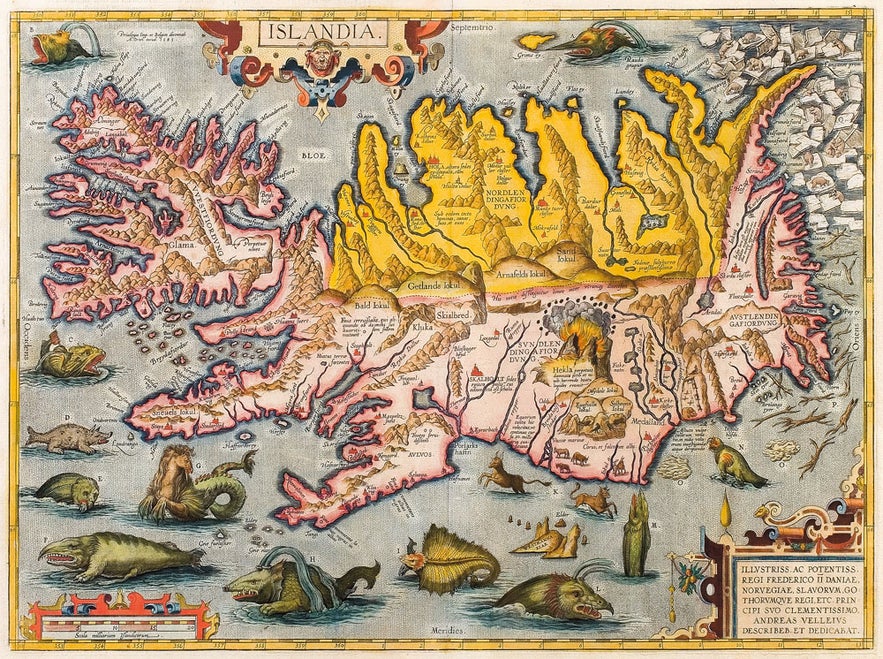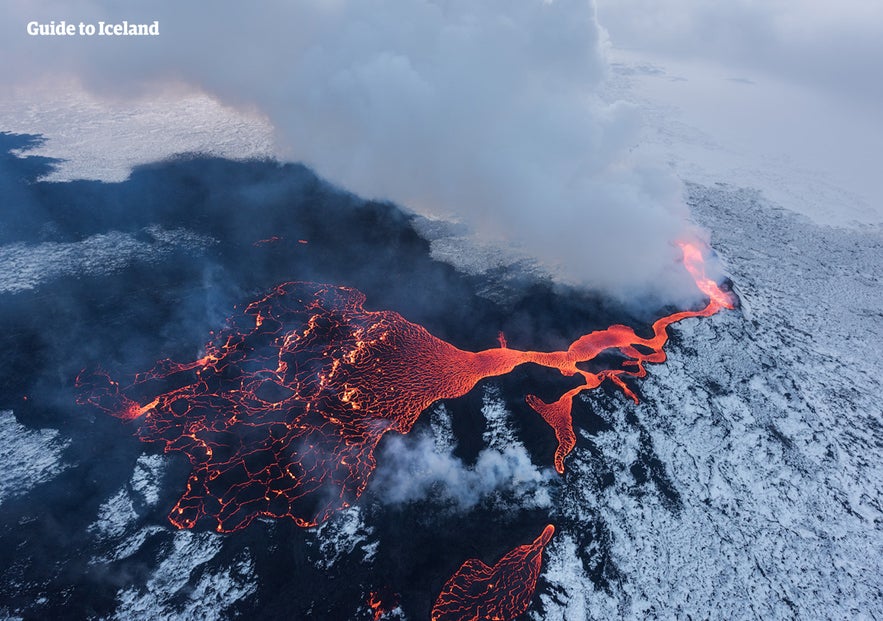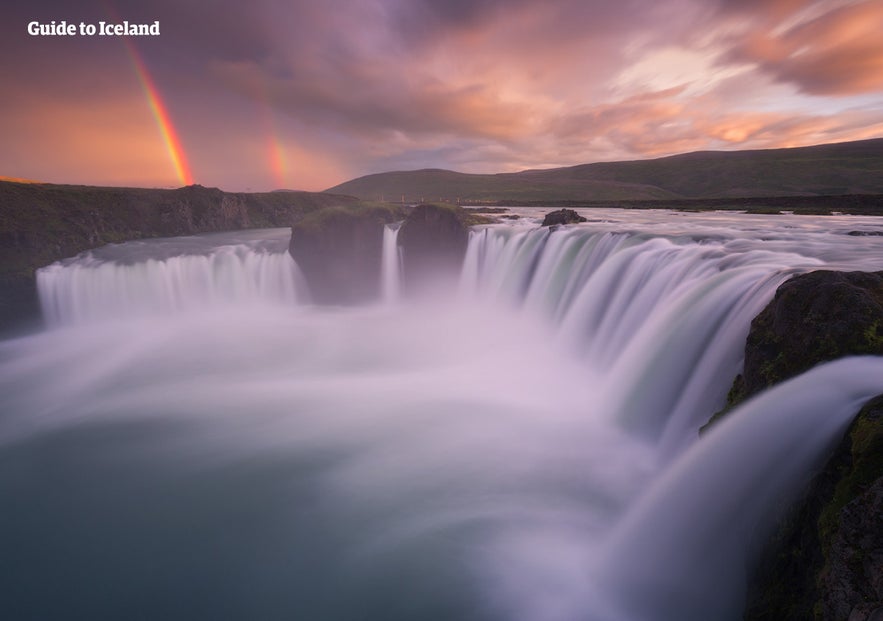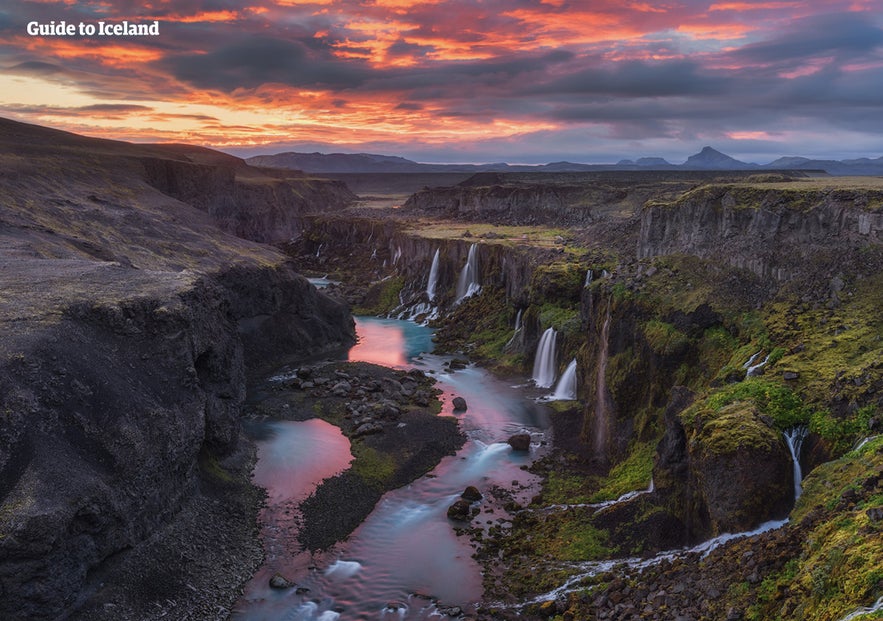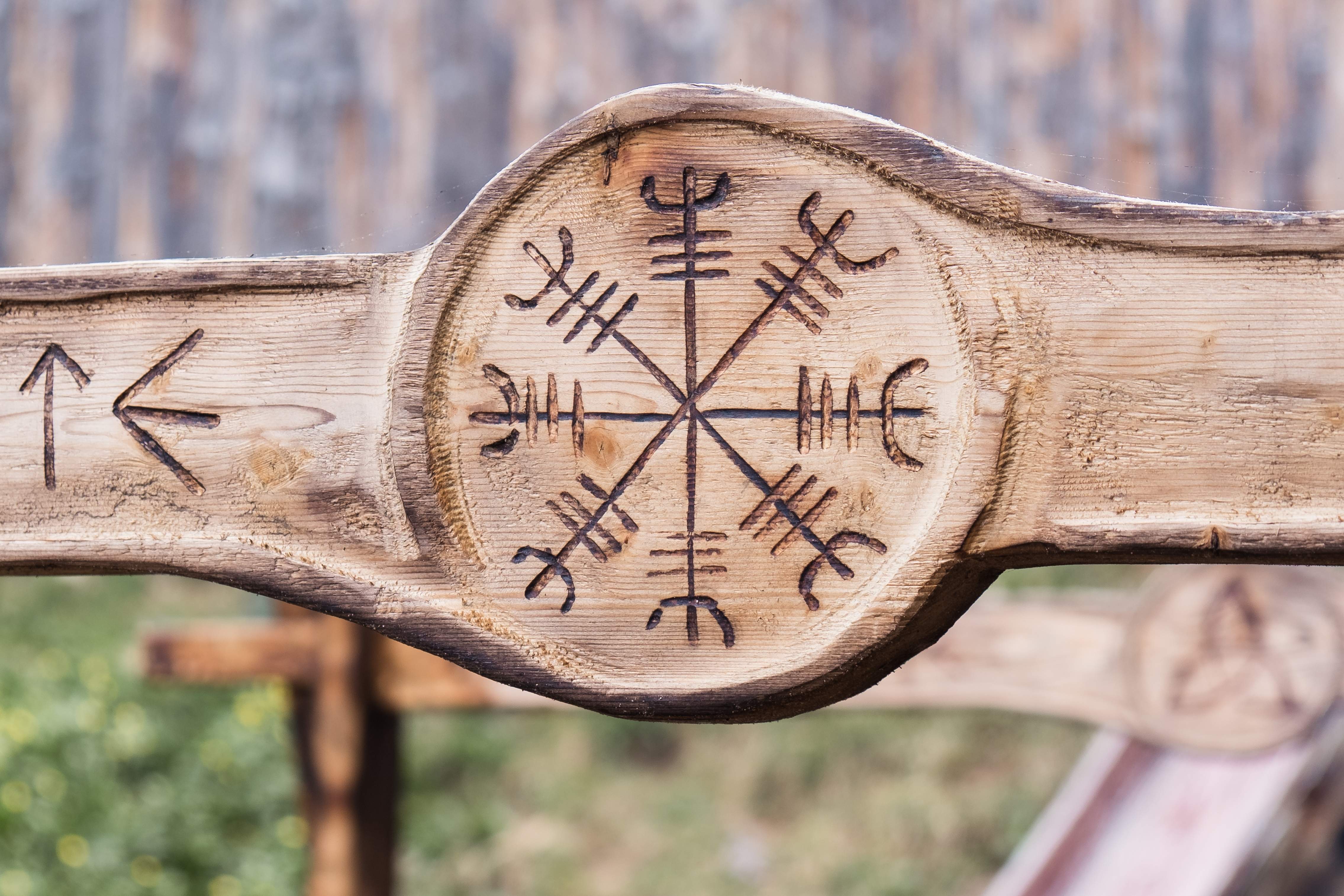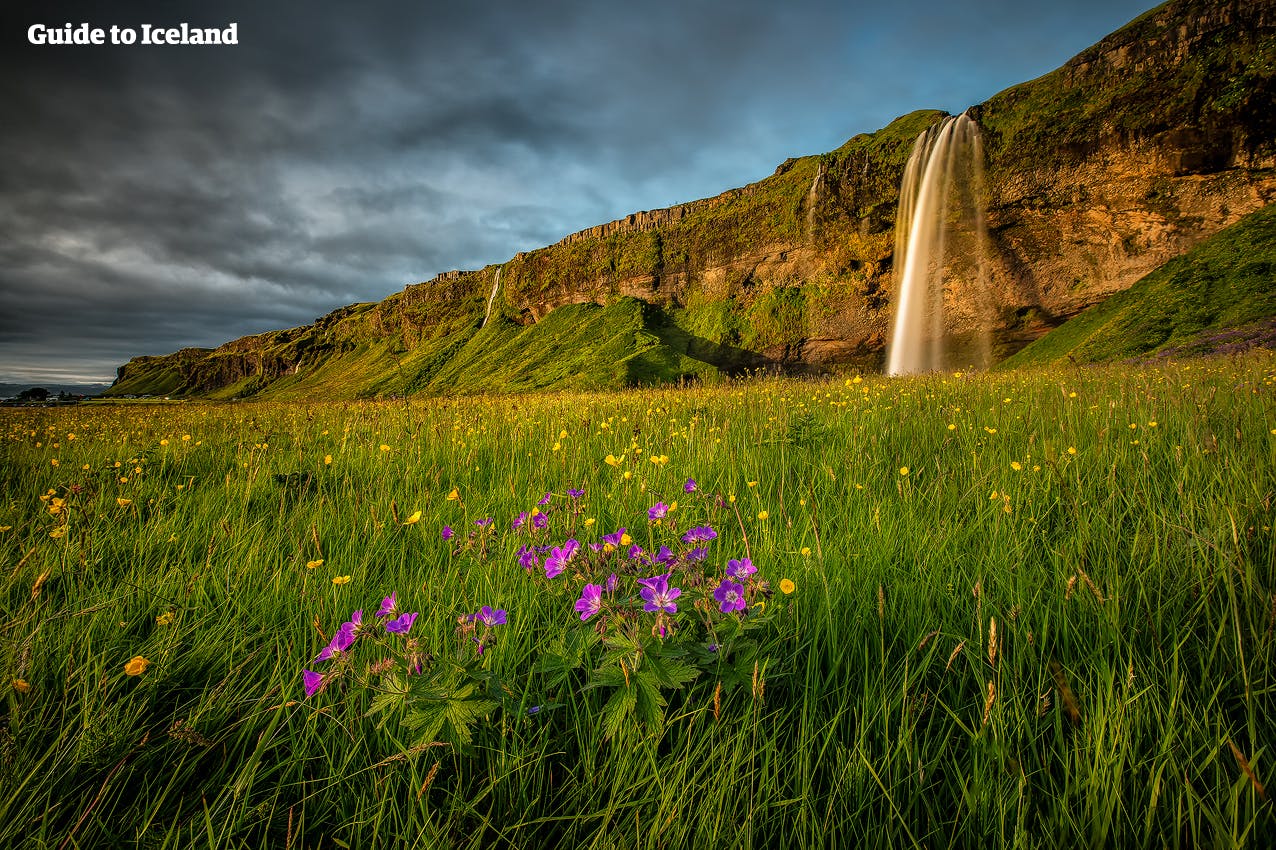Discover the history of Iceland, from its first settlers to the modern republic. Learn how geography and climate shaped the nation’s path. Explore the events that defined its most pivotal moments.
Iceland is changing fast. Once an isolated island nation, it now welcomes millions of visitors each year, spurring a wave of urban development, immigration, and cultural reinvention.
Why You Can Trust Our Content
Guide to Iceland is the most trusted travel platform in Iceland, helping millions of visitors each year. All our content is written and reviewed by local experts who are deeply familiar with Iceland. You can count on us for accurate, up-to-date, and trustworthy travel advice.
In Reykjavik, that transformation is especially clear. Streets like Laugavegur and Laekjargata have evolved from quiet thoroughfares into bustling hubs lined with hotels, cafés, and shops. The capital’s rapid growth mirrors Iceland’s rising global appeal, supported by a wide range of accommodation, rental cars, and curated tours. What was once considered remote now feels surprisingly connected. And while change is inevitable, the question of how much Iceland should change remains an open discussion.
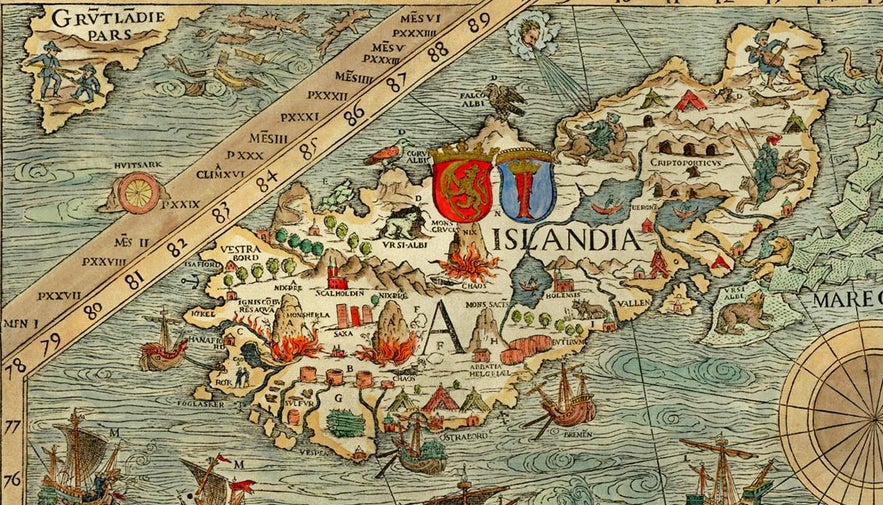 Photo by Wikimedia, Creative Commons, by Olaus Magnus.
Photo by Wikimedia, Creative Commons, by Olaus Magnus.
Tourism has been the saving grace of the Icelandic economy, which was in freefall during the 2008-2011 banking crisis. There are now numerous accommodation options available for travelers, a plethora of holiday trips to experience, and even car rentals to help visitors traverse the country.
Having recovered financially and outmatched the GDP of previous years, Iceland’s future has never looked brighter.
But how did Icelanders reach this unique and monumental moment in their national timeline? To face the challenges of the future, residents here will have to look back on this country’s fascinating history, from its early settlement to its declaration of independence after World War II, as well as the contentious and influential years that followed.
Key Takeaways
-
Iceland was shaped by geothermal activity, having been formed around 70 million years ago by underwater eruptions.
-
While Iceland may have been discovered by a Greek explorer in 330 B.C., Irish monks known as the Papar may have been the first to arrive in the 9th century.
-
In the late 9th and 10th centuries, Norsemen sailed to Iceland and made permanent settlements.
-
Although Icelanders believed in Norse mythology for generations, the country Christianized in the year 1000.
-
During the 13th century, Iceland had a civil war over their relationship with Norway, eventually becoming their vassal. A century after this civil war, Iceland was handed over to Denmark.
-
The eruption of Laki Volcano lasted from June of 1783 to February of the following year, resulting in thousands of deaths and famine.
-
Iceland remained neutral during World War I and II, though the conflict did influence the land of ice and fire.
-
Iceland finally gained its independence from Denmark in 1944 after 98 percent of Icelanders voted in favor of independence.
-
The land of ice and fire has continued to evolve and grow after becoming independent, becoming a contested strategic spot during the Cold War and growing into a popular tourist destination.
How Old Is Iceland?

Geologically, Iceland first began to form approximately 70 million years ago. A large magma pocket sits beneath the island and is thought to have been the catalyst that started this process.
This magma pocket is known as the Iceland Plume. Its origins are thought to lie over 6,500 feet (2,000 meters) inside the Earth’s mantle. The Plume lies along the meeting point of the Eurasian and North American tectonic plates, a rift known as the Mid-Atlantic Ridge.
Both of these factors make Iceland a hotbed for geothermal activity.
Long before the dawn of humankind, this plume caused a series of underwater eruptions that quickly began to sculpt the island we know today. It's still the primary reason Iceland boasts over 200 different volcanoes, geysers, and volcanic fissures.
As you can see, Iceland’s volcanic history goes way back, but while it's simpler to consider these elemental forces as ancient Iceland history, something long forgotten, the truth is that Iceland is still very much experiencing growing pains.
These same forces can still be seen in the many earthquakes and volcanic eruptions in Iceland.
In the Westman Island Archipelago, the island of Surtsey was created between 1963 and 1967 due to underwater volcanic eruptions. Today, Surtsey is classified as a protected reserve, with only academics studying it allowed to set foot on the island.
Then, consider the ice-capped volcano, Eyjafjallajokull, which erupted in 2010 after a 200-year silence. The Eyjafjallajokull’s eruption would go on to shape Iceland’s future, causing an enormous ash cloud that halted air traffic over Europe while simultaneously leading the country’s tourist industry to blossom.
Though less consequential, there have been countless other eruptions and earthquakes over the years. Another eruption occurred at Grimsvotn Volcano in 2011, followed by ones in the Bardarbunga Stratovolcano in 2014 and 2015, which formed the Holuhraun Lava Field.
Most recently, the Reykjanes Peninsula has come alive after 800 years of no activity. Since 2021, there have been recurring eruptions by Fagradalsfjall Volcano, Litli-Hrutur Mountain, and the Sundhnukagigar Craters, though they have had little effect on daily life or travel in Iceland.
Not only will visitors to Iceland have multiple opportunities to visit these incredible volcanoes, but they will also catch a rare glimpse of the exposed North American and Eurasian tectonic plates.
These plates are moving apart every so slightly (0.7-1 inch or 2-3 centimeters a year) at Thingvellir National Park, one of the main sights on Golden Circle tours. You can also symbolically walk between them on the Bridge Between the Continents!
- See also: National Parks in Iceland
When Was Iceland Discovered?
 Photo from Wikimedia, Creative Commons, by Johan Peter Raadsig.
Photo from Wikimedia, Creative Commons, by Johan Peter Raadsig.
For much of history, Iceland was one of the largest uninhabited islands in the world. Ancient Greek and Roman texts mention a mysterious northern land called Thule, which some scholars speculate may have referred to Iceland.
However, this connection remains uncertain. The earliest reference to Thule dates to around 330 B.C., when the Greek explorer Pytheas recorded his travels.
In the late 8th century, the Irish monk Dicuil wrote of clerics who had lived on an island that may have been Iceland, providing some of the earliest written accounts of possible habitation.
Archaeological findings suggest that there were seasonal inhabitants in Iceland before the official date of settlement. This means that it’s possible that Irish monks were among the first to discover Iceland, though this has not been fully confirmed.
One of the more interesting historical sites that may relate to this pre-settlement history are the man-made Caves of Hella, which are said to be home to evidence of Irish monks in Iceland. They’re a popular location along Iceland's South Coast, and can be explored with a guided Hella cave tour.
When Was Iceland Settled?
Iceland was officially settled in the late 9th century, near the end of the Viking Age. According to historical sources, the first permanent Norse settlers arrived around 874 AD, led by Ingólfur Arnarson, who is traditionally considered the founder of Reykjavik.
Over the following decades, waves of Norse migrants, mainly from Scandinavia and the British Isles, continued to arrive, establishing farms and communities across Iceland.
Our knowledge of this settlement period comes primarily from two medieval texts: the Landnamabok (Book of Settlements) and the Islendingabok (Book of Icelanders).
These works, initially written in the 12th century but based on earlier oral storytelling traditions, offer detailed accounts of the early settlers, including their origins, land claims, and genealogies.
The Landnamabok is especially rich in detail, listing over 1,400 settlements and more than 3,000 individuals, along with anecdotes, family trees, and stories of the Norse gods.
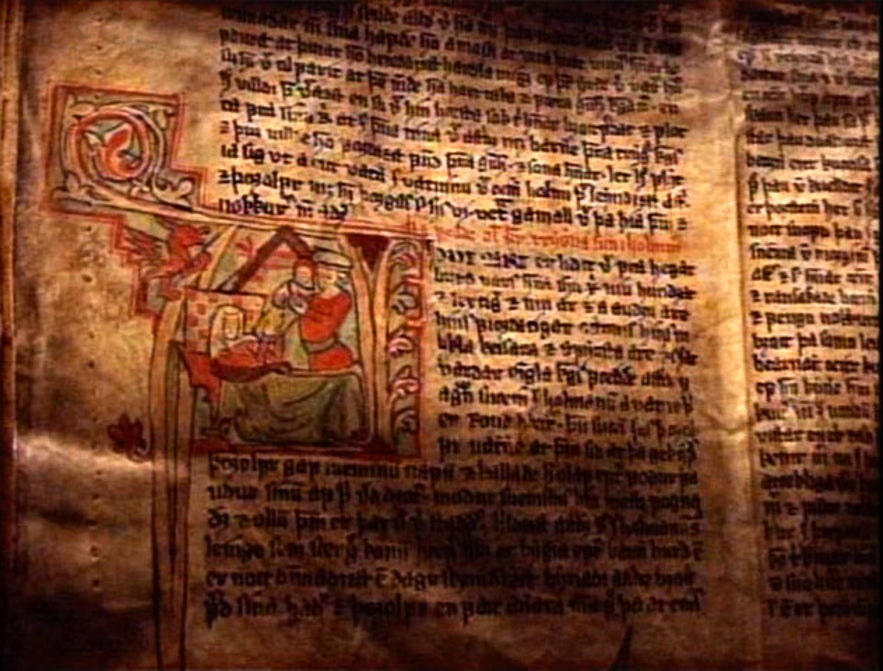 Photo from Wikimedia, Creative Commons, by the Arni Magnusson Institute.
Photo from Wikimedia, Creative Commons, by the Arni Magnusson Institute.
The Islendingabok, authored by the priest Ari Þorgilsson, provides a historical overview of Iceland’s early years, including its settlement and the adoption of Christianity in the year 1000 AD.
The Icelandic Saga academic, Sigurour Nordal (1886 - 1974) described this medieval literature as follows:
“No Germanic people, in fact, no nation in Northern Europe, has a medieval literature which in originality and brilliance can be compared with the literature of the Icelanders from the first five centuries after the settlement period.”
Thankfully, the modern Icelandic language remains very similar to Old Norse, meaning the stories of Landnamabok and Islendingabok are nearly as accessible to native speakers today as they were 1,000 years ago.
Contemporary Icelandic names are shared by Iceland’s first settlers, providing an intergenerational connection. Modern Icelanders know the sagas and their colorful characters like the back of their hand, having learned about them throughout their childhood.
- See also: How Hard Is It To Speak The Icelandic Language?
- See also: Icelandic Literature for Beginners
Who Settled Iceland First?
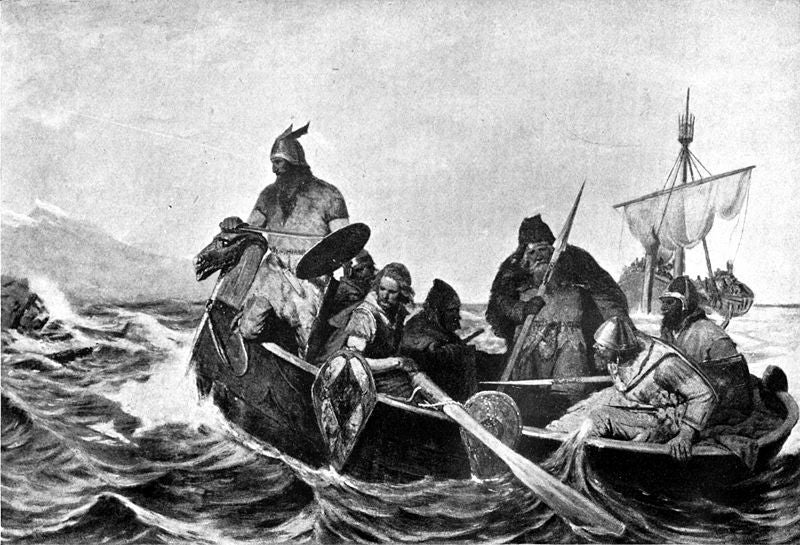
Ingólfur Arnarson is usually credited as Iceland’s first permanent settler. He came to Iceland with his family and his blood-brother, Hjörleifur Hróðmarsson.
As legend has it, Ingólfur threw from his ship two carved pillars and pledged to settle wherever they washed ashore. In due time, the pillars were found in current-day Reykjavik, where he settled with his family in 874.
Hjörleifur settled along the South Coast, by Hjörleifshöfði Mountain, just east of modern-day Vik. He did not live there for long, however, as he was killed by his slaves, who then went into hiding. Ingólfur ended up finding them and getting revenge for his blood-brother, in the islands now known as the Westman Islands.
These were some of Iceland’s original inhabitants. Unlike many Nordic countries, there are no indigenous people in Iceland, but there may still have been some people on the island before the supposed arrival of Ingólfur Arnarson.
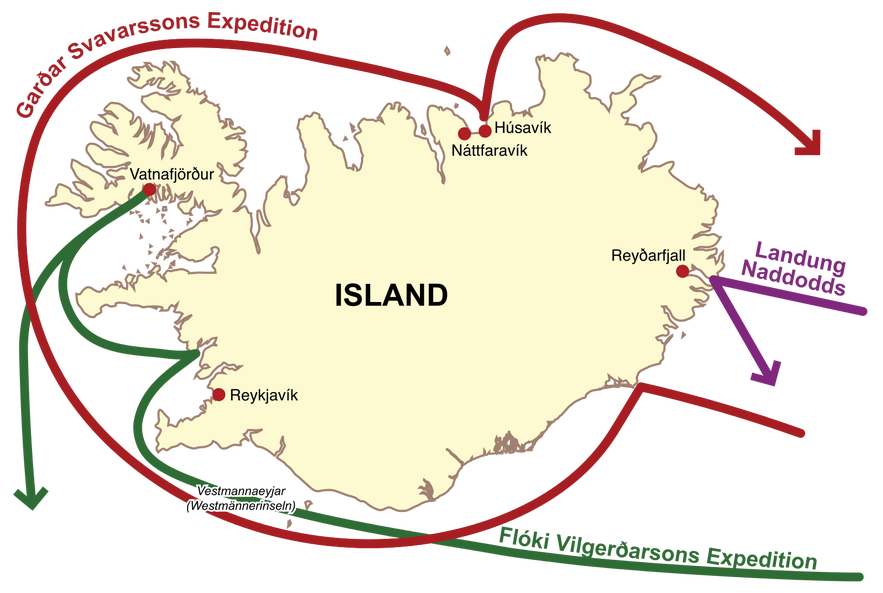
The Landnamabok gives a short reference to Irish monks, known as “the Papar,” being the first inhabitants of Iceland, having left behind books, crosses, and bells for the Norse to later discover.
They're also referred to in the Islendingabok as “wandering Christians” who departed the island because of their dislike for the “northern heathens.” Both examples seem to insinuate that the Papar had set up and abandoned residency before the official Settlement Age, though this has not been confirmed by archaeological evidence.
It has, however, been confirmed that there were at least seasonal inhabitants in Iceland far before Ingólfur Arnarson arrived. Remains of Viking houses have been found, mainly intended for producing things like fish oil, iron, and other goods that would then have been exported back to Scandinavia.
This matches the stories told of other travelers who made their way to Iceland, though they did not permanently settle here.
Most famous is Flóki Vilgerðarson, better known as Hrafna-Flóki or “Raven Floki”. He gave Iceland its name after he spotted some drift ice in the fjords during a difficult winter. He is the first Norseman to deliberately set sail to Iceland in written record, and his story is told in the Landnamabok.
Even though Iceland may have had inhabitants before Ingólfur Arnarson, it is still fitting to refer to him and his family as the first settlers. Norwegian chieftains followed Ingólfur through the next few decades to escape the heavy-handed King Harald of Norway, and in about 60 years, Iceland was fully settled. By A.D. 930, it's thought that all arable land in the country had been settled.
Before the long period of growth Iceland would soon experience, the settlement had grown so large that a new legislative body was in order; the ruling chiefs, therefore, established the Althingi in Thingvellir National Park, which is believed by many to be the world’s oldest nationwide parliament.
Experience Iceland's Settlement Firsthand
While you can't go back in time to see the first ships arrive in Iceland, there are a wide range of tours and historical sites you can visit while in the country.
-
Adalstraeti and Settlement Exhibition — Check out the oldest Viking longhouse discovered in Reykjavik. You can even enjoy a private guided tour of Reykjavik with a visit to the exhibit.
-
Settlement Center Travel Guide — Learn all about how Iceland was settled and other facts about the country's history at the Settlement Center in Borgarnes.
-
Entrance Ticket to Viking World Museum on the Reykjanes Peninsula — If you want to see a life-size recreation of a Viking long ship, visit the Viking World Museum in Keflavik.
Life in Early Iceland
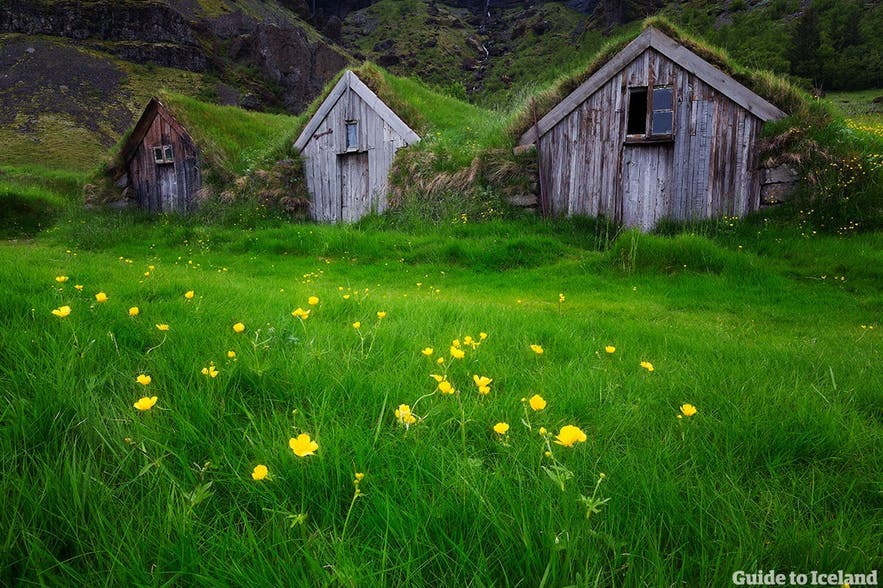
Around the time of the first settlers, it's suspected that approximately 40 percent of Iceland was covered with natural birch wood forests. This percentage was quickly depleted by the new arrivals, who were quick to use the material for constructing ships, homes, and farmsteads.
Trees that were not used for building were burned for warmth. Within a century, it's thought that Iceland was entirely deforested. This would have consequences regarding soil arability that has lasted until today.
Until the 14th century, traditional Viking longhouses were built by the first inhabitants of Iceland. Due to a lack of timber, Icelanders held on to a tradition of building sod houses, otherwise referred to as an Icelandic turf house, a type of dwelling made by cutting different patterns of sod, then layering them into the home’s interior walls. The roofing was also made from turf.
The turf provided good insulation, but these homes were rarely warm and relied on large central fires. Interestingly, early Viking houses had smoke ventilation systems, but this knowledge was lost after the Middle Ages. As a result, later Icelandic turf homes lacked proper airflow, often leading to respiratory issues.
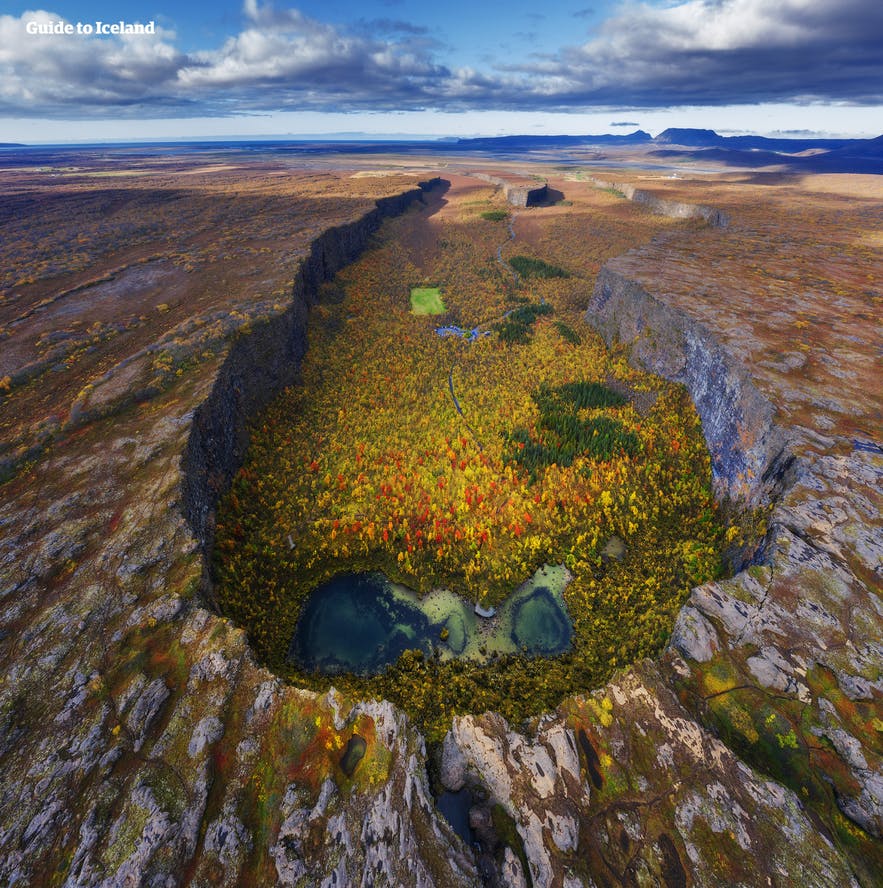
These turf houses were not strong and had to be reinforced each summer, or even rebuilt. This was a part of Icelandic building tradition up until the early 20th century, though it evolved over time.
To sustain life in Iceland, the early inhabitants needed to trade with the outside world. While Iceland was abundant with specific resources such as poultry, cattle, sheep, horses, pigs, and fish, the people still lacked many of life’s essentials and luxuries.
Trade was usually undertaken on short routes to neighboring Scandinavia and Europe as Iceland’s merchants were primarily farmers and thus could not afford to spend too much time away from their main source of income.
From Greenland, Icelanders would import walrus ivory, fur, and skins. They acquired such fine things as gems, silver, jewelry, and wine from Byzantium. England provided early Icelanders with wheat, tin, honey, and barley, while Russia and the East Baltic region offered up amber and slaves in equal measure.
Learn More About Early Life in Iceland
-
Arbaer Open Air Museum Travel Guide — To experience the traditional homes from throughout Iceland's history, visit the Arbaer Open Air Museum. It's considered one of the best museums and exhibitions to visit in Iceland if you're interested in learning more about the country's history.
-
Experience the Settlement Period Farm of Eirik the Red and Leif Eiriksson — Delve into Iceland's Viking heritage at the replica of Eirik the Red and Leif Eiriksson's farm from the 900s.
-
National Museum of Iceland Travel Guide — See artifacts, learn about Iceland's history, and more at the National Museum of Iceland in Reykjavik.
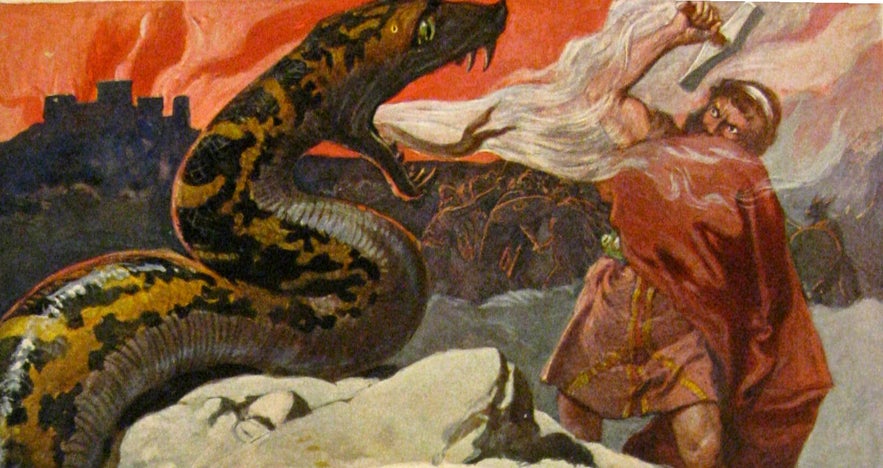
Iceland's Adoption of Christianity
For a time, Icelanders held onto beliefs in Norse mythology, following an oral tradition back to the time of their ancestors in Scandinavia. However, when Olaf Tryggvason became King of Norway in A.D. 995, he decided to focus his efforts on converting those under his rule to Christianity.
Olaf sent several missionaries to Iceland; however, they had only partial success. In A.D. 999, after another unsuccessful conversion attempt, Olaf shut off all trade routes to Iceland, refusing the Icelandic merchant ships entry to Norwegian ports.
To avoid a civil war in Iceland, the lawspeaker Þorgeir Þorkelsson was elected to decide whether Iceland should become a Christian country. Þorgeir was chosen for his reputation as a reasonable man who could act as a peaceful mediator between both sides of the debate.
The story goes that after deliberating for one day and one night under a fur blanket, Þorgeir finally concluded that Iceland should adopt a new faith. To mark the occasion, he brought his pagan idols to a waterfall and threw them in the abandonment of faith. This waterfall, Godafoss (“Waterfall of the Gods”), is a popular attraction when exploring North Iceland today.
Þorgeir declared that pagan worship would still be allowed in private, as well as the “exposure of surplus children” (infanticide — Icelanders believed the island could only hold so many people) and the consumption of horseflesh.
These directly went against the church’s teachings, but were ingrained cultural habits in the Icelandic population. Once the church garnered complete control in Iceland, these practices were banned.
Discover Iceland's Historical Locations Firsthand
Interested in witnessing the grandeur of some of the sites that shaped Iceland? Know that there are numerous tours that'll take you to Godafoss Waterfall and other important locations during your time in Iceland.
-
North Iceland Waterfalls, Lake Myvatn & Geothermal Nature Baths from Akureyri — In addition to visiting Godafoss Waterfall, you'll get to experience geothermal features and more on this exciting sightseeing tour.
-
Godafoss Waterfall & Forest Lagoon Bathing Tour from Akureyri — After taking in the beauty of Godafoss Waterfall, this tour will take you to a geothermal spa for a relaxing soak.
-
The Golden Circle Minibus Tour from Reykjavik — Travel to the stunning Thingvellir National Park, the place where Iceland became Christian, with this Golden Circle tour.
Iceland’s Civil War: The Age of Sturlungs
In the 13th century, a civil war known as the Age of the Sturlungs gripped Iceland. In 1220, this conflict saw powerful Icelandic chieftains (Goðar) battle to decide whether Iceland should become a subject of Haakon the Old, King of Norway.
This period of conflict is named after the Sturlungar, a powerful family in Iceland at that time.
Snorri Sturluson was the chieftain of the Sturlungar clan and a vassal of the Norwegian King, as was Snorri’s nephew, Sturla Sighvatsson. While his uncle is more famed as a saga writer, Sturla would make a name for himself, aggressively warring with rival clans who refused to accept that they were subject to the Norwegian monarch.
This culminated in the Battle of Orlygsstadir in 1238, where Sturla was soundly defeated. This is the largest known battle in Iceland’s history, and you can visit the 1238 Battle of Iceland Exhibition in North Iceland to learn more about it, including experiencing it through virtual reality.
However, fights continued to erupt in the following years, and the Norwegian King was nothing if not persistent in stirring up trouble. Gissur Thorvaldsson, one of the former opponents of Sturla, was made a chief by the Norwegian King.
Gissur did much to push the King’s efforts, and finally, in 1262, the Gamli Sattmali, or Old Covenant, was signed. This agreement ended the Icelandic Commonwealth, and the island became a vassal of the Kingdom of Norway.
One century later, Iceland would be given over to the Danish. Denmark’s King Christian III challenged the open religious practices of Icelanders and forced Lutheranism on the people, and to this day, the official religion in Iceland is Evangelical Lutheran Christianity.
The Laki Eruption and the Mist Hardships
Disaster struck Iceland with the violent eruption of the Laki Volcano in the 18th century, beginning June 1783 and ending February 1784, killing 9,000 Icelanders.
This eruption was known as Skaftareldar (Skafta River fires). The lava wiped out almost all of the nation’s livestock, estimated at 80 percent, bringing a famine that killed up to a quarter of Iceland’s population.
The most important source for this event is the writings of Minister Jón Steingrímsson (1728-1791), who documented details about the eruption:
This past week, and the two prior to it, more poison fell from the sky than words can describe: ash, volcanic hairs, rain full of sulfur and saltpeter, all of it mixed with sand.
The snouts, nostrils, and feet of livestock grazing or walking on the grass turned bright yellow and raw. All water went tepid and light blue in color, and gravel slides turned grey. All the Earth's plants burned, withered, and turned grey, one after another, as the fire increased and neared the settlements.
This period of starvation, one of the worst the civilized world has ever experienced, is known as the Mist Hardships in English or “Móðuharðindin” in Icelandic. As hunger set in and the weather patterns began to take a life of their own, social order in Iceland broke down, and looting became frequent.
- See also: Things That Can Kill You in Iceland
Aside from the prevailing hunger, many would die from the toxic gas that filled the air and contaminated nature.
British cleric, Gilbert White, wrote of the period:
All the time, the heat was so intense that butchers’ meat could hardly be eaten on the day after it was killed, and the flies swarmed so in the lanes and hedges that they rendered the horses half frantic, and riding irksome. The country people began to look with a superstitious awe at the red, louring aspect of the sun.

Painting Eugène Delacroix depicting the French Revolution, led by Marianne, the representation of France, from Wikimedia.
The eruption had widespread consequences outside of Iceland; its influence reached such far-flung corners as North America, the Sahel of Africa, and Europe. Disrupting the monsoon cycles of Africa and India, the eruption caused widespread famine in Egypt (resulting in a loss of ⅛ of the population). The subsequent poverty and food shortages in France contributed to the French Revolution.
Top Highland Tours
Laki and the Lakagigar craters are among the Highland's most stunning areas, and you can visit them yourself on several different tours.
-
Super Jeep Tour of Fjadrargljufur Canyon & Lakagigar Craters from Kirkjubaejarklaustur — Go on an unforgettable adventure to the Lakagigar Craters and other remarkable Highland sites on this thrilling Super Jeep Tour.
-
Amazing 1-Hour Airplane Tour Over Landmannalaugar and Highlands from Skaftafell — Ride an airplane over Landmannalaugar and other Icelandic treasures and discover their beauty from above.
Iceland in World War I
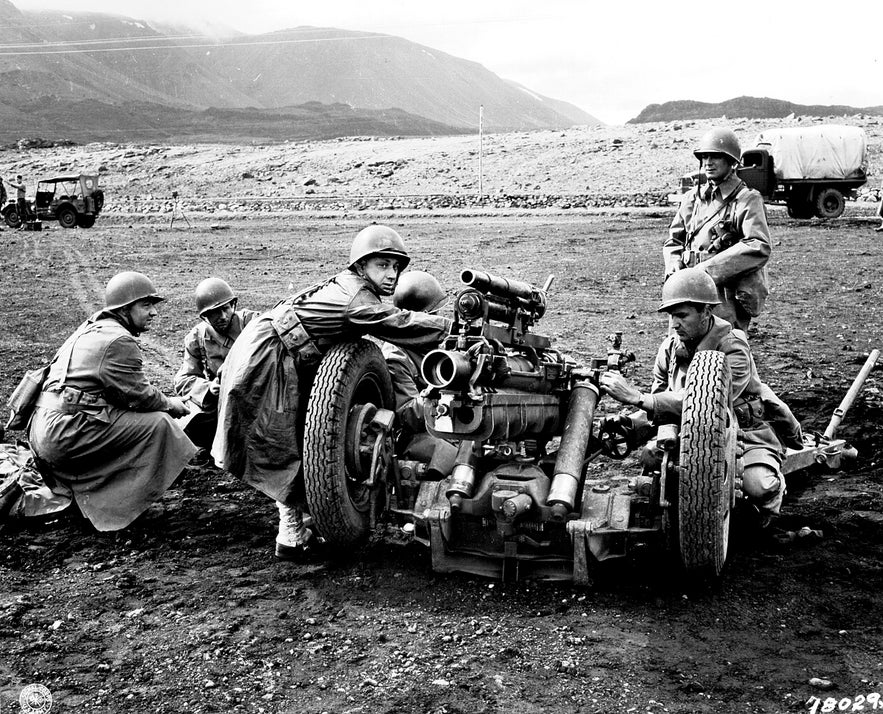 Photo from Wikimedia, Creative Commons, by army.mil.
Photo from Wikimedia, Creative Commons, by army.mil.
When World War I broke out, Iceland was still a part of Denmark and, like them, remained neutral. However, the land of ice and fire did have an influence on the war, and vice versa.
Over a thousand Icelanders were registered as soldiers, fighting with Canada and the United States. However, only about a third were born in Iceland, while the remaining soldiers had Icelandic heritage and were born overseas.
Additionally, Iceland had an edge over many other European countries that fought during the war — a safe countryside untouched by violence and bloodshed. There was a high demand for wool during the war, and because Iceland's sheep fields weren't ravaged by fighting, they were able to make a lot of money off of wool exports.
During the war, Iceland's handling of both internal affairs and relationships with other states demonstrated its capabilities. This played a part in Denmark recognizing Iceland as a sovereign state in 1918, though they would not gain full independence just yet.
Iceland in World War II
The recent history of Iceland picks up in the middle of the 20th century. Iceland finally became a republic on June 17, 1944, when 97 percent of voting Icelanders opted in favor of independence from Denmark.
This vote occurred only four years after Denmark had succumbed to the invading German army. This position had left Iceland, a neutral country, in a rather hard position. But was Iceland ever at threat from the Axis powers in the first place?
It should be understood that Iceland’s position on the globe is one of enormous strategic importance for any party engaged in international warfare. Iceland is positioned directly between mainland Europe, to its east, and North America, to its west, and looms over the Atlantic Ocean.
This is a highly advantageous spot for tacticians who understand that whoever operates military bases in Iceland, be they ports or airfields, has dominion over sea and air traffic in that vast and vulnerable stretch of ocean, as well as easy access to both landmasses.

In the early 1930s, however, the Third Reich had shown little interest in taking Iceland, though Allied forces found that this position quickly changed after the onset of war, especially following Operation Weserubung, the Axis invasion of Norway and Denmark.
- See also: Top 9 Museums in Reykjavik
Britain, in particular, felt that this threatened their control of the North Atlantic and quickly telegraphed the Icelandic capital, asking them for their support as “a belligerent and ally.” So, too, did Britain want to build bases in Iceland to strengthen their North Patrol. Reykjavik responded by confirming their neutrality.
The next day, April 10, the Icelandic Parliament declared that Denmark could not fulfill its duties supporting Iceland and thus transferred all powers to the domestic government.
Two days later, Operation Valentine saw the British invade the neighboring Faroe Islands. It was a sure sign of the events to come.
On May 6, British Prime Minister Winston Churchill made a case to the war cabinet that building military bases in Iceland was essential in preemptively denying the country to Axis forces.
He argued that further diplomatic efforts with the Icelandic government would likely reveal British invasion plans to the Germans; hence, it was a more strategic move to invade without any prior warning.
There was little fear that such an operation could fail. After all, the Icelanders had no standing army, and there would likely be only a handful of German resistors. On May 3, the British Under-Secretary for Foreign Affairs, Alexander Cadogan, wrote in his diary:
“Home 8. Dined and worked. Planning conquest of Iceland for next week. Shall probably be too late! Saw several broods of ducklings.”
The invasion plan known as Operation Fork was conducted haphazardly en route. There were no Icelandic speakers among the invasion force, and many of the maps being used had been drawn from memory.
Luckily for both parties, Icelanders spotted a British plane surveying Reykjavik, giving them advanced notice that the British would arrive immediately. When the force finally did come, the British were surprised to find the Icelanders rather accommodating, even helping the soldiers unload supplies from their ship.
 Photo from Wikimedia, Creative Commons, by USMC Archives.
Photo from Wikimedia, Creative Commons, by USMC Archives.
Upon arriving at the German consulate, British forces were relieved to find no resistance. What they did find, however, was a fiery bathtub, midway through burning intelligence documents, and Consul Gerlach angrily protesting that Iceland was a neutral country.
After being reminded that Denmark had also been a neutral country, the Consul was arrested.
Sixty-two unarmed German sailors were also arrested after being rescued from the Bahia Blanca, a German freighter that had recently struck an iceberg in the Denmark Strait.
During the war, the British and Canadian troops in Iceland would eventually fall to the wayside in favor of U.S. Forces. The British had called upon the then-neutral United States to take over control of Iceland as their forces were badly needed on other fronts.
A great deal of development was undertaken throughout this period, namely Keflavik International Airport, Reykjavik Domestic Airport, harbors, hospitals, and road networks. Despite the incredibly beneficial economic impact, this action proved to be highly controversial to much of the Icelandic population, who continued to protest their neutrality, all the while cooperating with Allied troops.
- See also: The Nature of Icelanders
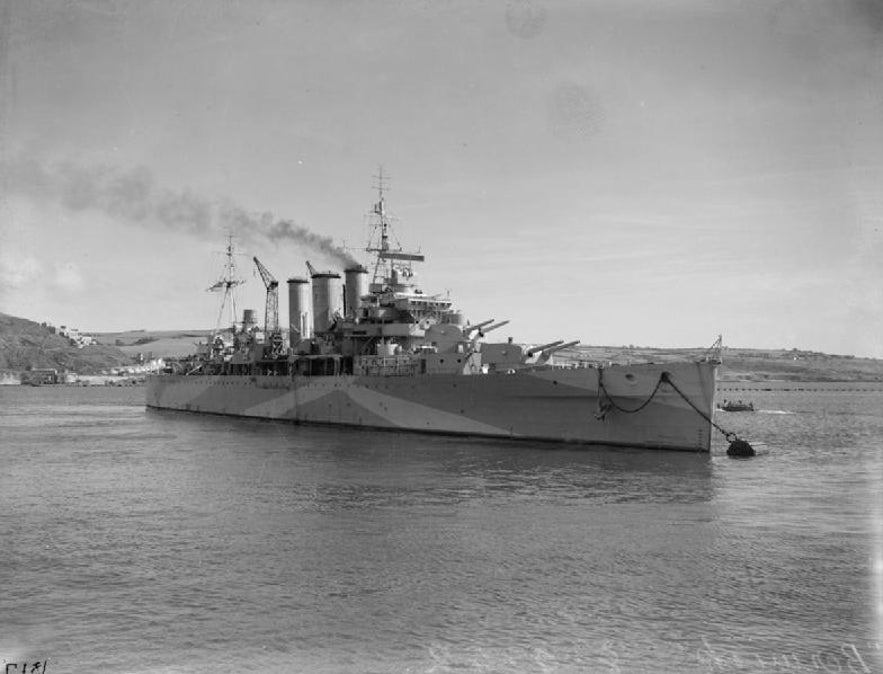 Photo from Wikimedia, Creative Commons, by the Royal Navy.
Photo from Wikimedia, Creative Commons, by the Royal Navy.
Equally controversial was the impact that foreign troops had on Icelandic society. During the heightened years of the war, foreign troops made up 50 percent of the native male population in Iceland, and local men were quick to notice the infatuation many Icelandic women showed toward these new arrivals.
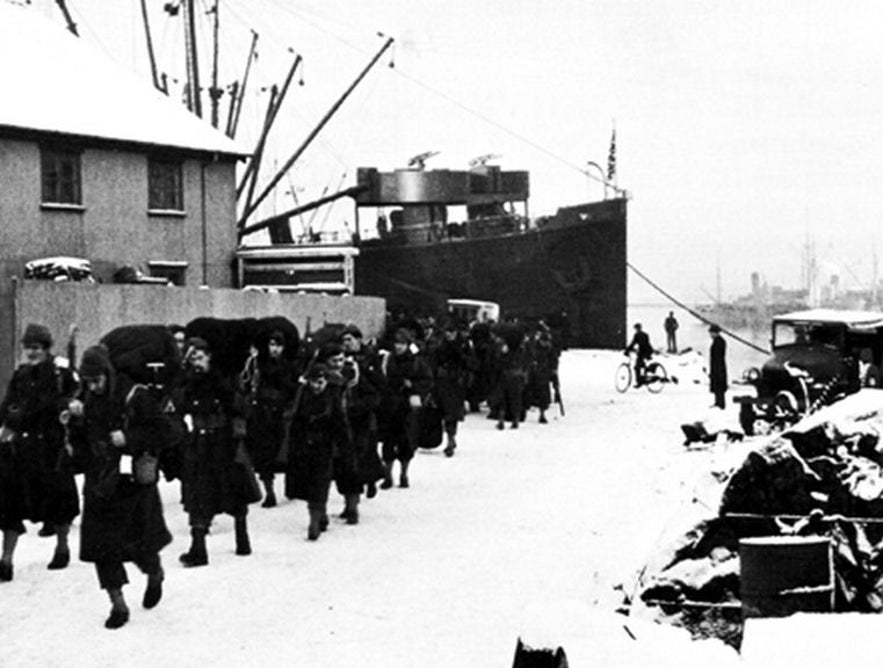 Photo from Wikimedia, Creative Commons, by United State Army.
Photo from Wikimedia, Creative Commons, by United State Army.
This became known as astandid, or “The Situation,” where women found to be engaging sexually with foreign troops were accused of prostitution and treasonous activity. In 1941, it was thought that the Icelandic police force was tracking over 500 women, many of whom were sent to institutions such as that at the Kleppjarnsreykir Center in West Iceland, where they faced inhumane conditions and solitary confinement.
Children fathered by foreign troops were known as astandsborn (children of the situation).
Iceland Declares Independence
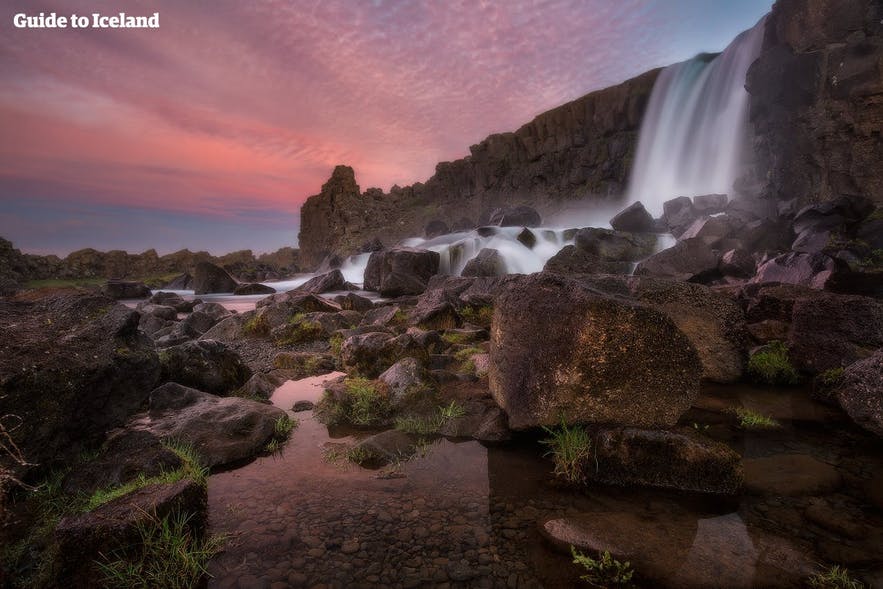
The Icelandic constitutional referendum was held in 1944 as the closing chapters of the war began to materialize. Given that Nazi Germany still occupied Denmark in 1944, many Danes felt it was inappropriate to hold such an election.
The move was congratulated by King Christian X of Denmark after the Icelandic population voted 98 percent in favor of independence.
According to the 1918 Danish–Icelandic Act of Union, the two countries would maintain strong ties, with Iceland still falling under the territorial dominion of the Danish Monarchy. This subjection to the monarchy was later abolished in the same year, and complete autonomy was granted, with Sveinn Bjornsson serving as the first president of the Republic of Iceland.
Gaining independence meant that Iceland had to reinvent its position on the world stage as culturally separate from Denmark and its relationship with the rest of mainland Europe.
For example, the Icelandic flag was ratified by law in 1944. The inherent values of the Icelandic national psyche, such as religious expression and the preservation of their language, were collectively agreed upon as the founding principles of Iceland as an independent nation.
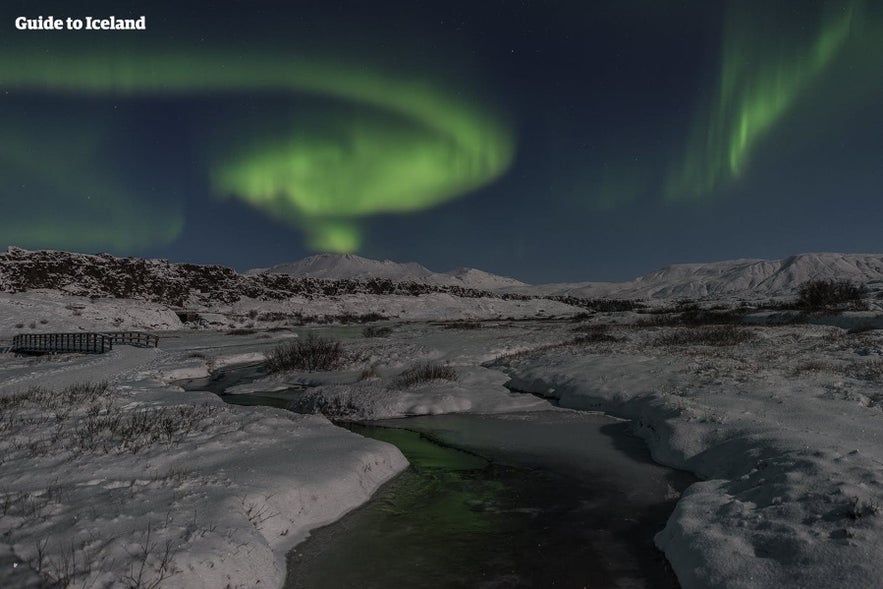
In the years preceding and immediately after independence, a wave of Icelandic nationalism had begun to find its footing in the Icelandic psyche, a cultural invention rooted mainly in the sagas. They’re neither myth, nor epic, nor romances, nor folktales, but stories of vengeance, wealth, power, and love.
Jón Sigurðsson led a group of Icelandic intellectuals toward an independence movement, recreating an autonomous Icelandic government. He is credited as the modern-day founder of Iceland and is often referred to as President Jón by Icelanders, even though he was never officially the president of Iceland.
His birthday, June 17th, is the official independence day of Iceland, and you can see his statue standing proudly on Austurvollur Square, in front of the Icelandic Parliament building.
Iceland History and Culture Today
Despite their national independence, the Americans maintained a presence in Iceland long after the promised date of departure stipulated in the Keflavik Agreement. According to this contract, the Americans would leave Iceland following the end of World War II, transferring control of Keflavik Airport in the process.
However, given the alarming rate at which anti-Communist rhetoric entered the mainstream political consensus in the United States, it was unilaterally decided that their presence should be maintained to deter Russian nuclear attacks.
This caused widespread protests in Iceland, to little avail, but did cement in the Icelandic psyche a distrust of widespread foreign intervention and the willingness to protest policies they considered opposed to the country’s value systems.
The airport was eventually returned to the Iceland Defense Force in 1951, though the U.S. Navy maintained Keflavik Naval Air Station until 2006.
As of 2017, it's again the intention of the U.S. military to build a modern airbase on the Reykjanes Peninsula. According to the 1951 NATO Defense Treaty, the United States is responsible for defending Iceland for an undisclosed length of time.
This should come as little surprise; after all, Icelandic society might be moving rapidly, but the country’s strategic positioning above the Atlantic is as important today as it ever has been. So, too, is the American influence that still lingers in Iceland — even now, it's clear that this is a country of hot dog lovers, movie lovers, rock n’ roll musicians, and revolutionaries.
For the latter half of the 20th century, unemployment was low, industries were prospering, and life in Iceland was good, particularly for the most part, save for years when the annual harvest proved insufficient.
In 1949, Iceland joined as one of the founding members of NATO, while only a year before, the country had begun to receive Marshall Aid from the United States.
The next decade of significant interest in Iceland is the 1980s. In 1986, Iceland hosted the Reykjavik Summit, a meeting between U.S. President Ronald Reagan and General Secretary of the Communist Party of the Soviet Union, Mikhail Gorbachev, regarding nuclear disarmament.
This ultimately unsuccessful meeting of minds—the issues would, thankfully, be resolved in the next year—took place at Hofdi House, marking a new era.
In 1989, Vigdis Finnbogadottir became the President of Iceland and the world’s first democratically elected female head of state.

In the 1990s, the Independence Party set a drastic reform of Iceland’s economy into motion. As with most significant changes, it took some time to acclimate, but the economy began to grow again strongly and swiftly after a brief recession.
Growing at a rate of 4 percent per year on average, the Icelandic economy diversified its industries so as not to be overly reliant on fishing. Iceland joined the European Economic Area in 1994, thus strengthening its position on the international financial stage.
- See also: The Ultimate Guide to Downtown Reykjavik
For a short time, Icelanders considered banking their new modus operandi. In the wake of the 2008-2011 economic crash, however, this proved to be a short-lived, reckless dream.
They would have to look elsewhere if they were ever going to recoup the losses accumulated over the years of the financial crash.
As luck would have it, the world’s eyes were already on Iceland, particularly the dark and spewing ash cloud emanating from it. The eruption of the Eyjafjallajokull Volcano was worldwide news and affected much of Europe.
It was then that various agencies in Iceland, including the government and tourist board, rallied around the concept of boosting the country as a must-see travel destination.
Iceland has also been utilizing its resources for green energy production and has built numerous power plants to capture Iceland’s geothermal power, along with dams for hydroelectric power stations. This has had both incredible benefits and detriments to the Icelandic community, sparking an ever-hot debate on the preservation of nature versus the utilization of energy sources.
- See also: Iceland's Troubled Environment
Top Iceland History Tours
Want to learn more about Iceland's history during your stay? Here are several popular experiences that will give you a closer look at the country's history and culture.
-
Small Group Walking Tour of Reykjavik's History & Culture — Visit iconic Reykjavik sites and discover its unique history on this exciting walking tour.
-
Viking Walking Tour of Reykjavik — Learn all about the Vikings who first settled Iceland and made the land of ice and fire their homes on this exciting tour.
-
Folklore Walking Tour of Reykjavik with Tales of Trolls, Elves & Hidden People — On this exciting culture tour, fans of the Norse sagas can learn all about Iceland's folklore and stories.
Iceland History FAQs
Here are some of the most frequently asked questions about Icelandic history.
Who Was the First King of Iceland?
Technically speaking, there was no king of Iceland. Since the creation of the Althingi Parliament, Icelanders have worked together to make their own decisions and settle disputes. However, given that Iceland became part of the Kingdom of Norway following the Gamli Sattmali agreement, it could be said that Haakon the Old was the first king to rule over the land of ice and fire.
Was Beer Banned in Iceland?
In 1915, the growing prohibition movement reached Iceland, and alcohol was banned. Alcohol had a reputation for causing violence, which is why many sought to make its consumption illegal.
However, alcohol would not remain banned for long because of a trade deal with Spain. They refused to import Icelandic fish unless their export, wine, was accepted, which led to the modification of the ban. The alcohol ban was further changed in the 1930s to allow for spirits but still outlawed beer until decades later.
On March 1st, 1989, the ban on beer was lifted. This event led to the celebration of Beer Day, where some Icelanders partake in drinking and bar crawls.
Why Was Iceland Settled?
Iceland was settled primarily by Norse explorers and Vikings in the late 9th century. The island was uninhabited, making it an attractive destination for settlers. Some early settlers also sought refuge from the centralized powers emerging in Norway.
When Was Iceland's Althingi Established?
Iceland's Althingi, one of the world’s oldest parliaments, was established in 930 AD at Thingvellir. It served as a national assembly where chieftains and their followers met to make laws and settle disputes. The creation of the Althingi marked a significant step in organizing Icelandic society under a common legal and governance framework.
Iceland Has a Unique History Unlike Any Other Country
The history and culture of Iceland are rich with legend and lore, ranging from the first settlement that was established here over a thousand years ago to the prosperous, liberal, and modern Scandinavian nation that it is today. Thanks to a healthy economy and the island’s natural resources, Icelanders are looking forward to a bright and beautiful 21st century.
Did you enjoy our article on the history of Iceland? Did you learn anything new? Was there a particular chapter in history you'd like to know more about? Feel free to leave your thoughts and queries in the comments section below.


